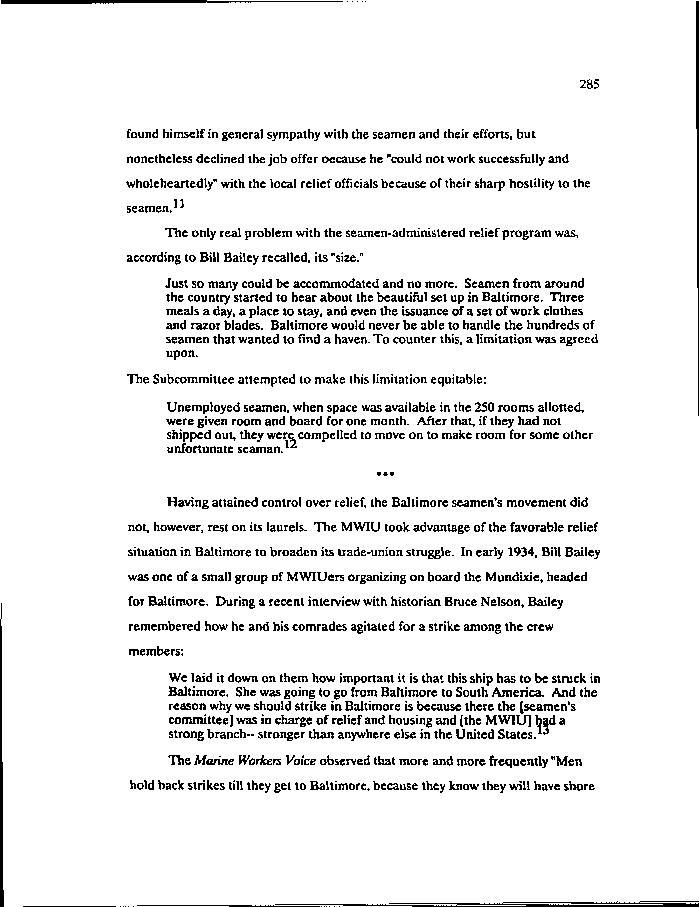|
285
found himself in general sympathy with the seamen and their efforts, but
nonetheless declined the job offer oecause he "could not work successfully and
wholeheartedly" with the local relief officials because of their sharp hostility to the
seamen. *
The only real problem with the seamen-administered relief program was,
according to Bill Bailey recalled, its "size."
Just so many could be accommodated and no more. Seamen from around
the country started to hear about the beautiful set up in Baltimore. Three
meals a day, a place to stay, and even the issuance of a set of work clothes
and razor blades. Baltimore would never be able to handle the hundreds of
seamen that wanted to find a haven. To counter this, a limitation was agreed
upon.
The Subcommittee attempted to make this limitation equitable:
Unemployed seamen, when space was available in the 250 rooms allotted,
were given room and board for one month. After that, if they had not
shipped out, they were compelled to move on to make room for some other
unfortunate seaman.
Having attained control over relief, the Baltimore seamen's movement did
not, however, rest on its laurels. The MWIU took advantage of the favorable relief
situation in Baltimore to broaden its trade-union struggle. In early 1934, Bill Bailey
was one of a small group of MWIUers organizing on board the Mundixie, headed
for Baltimore. During a recent interview with historian Bruce Nelson, Bailey
remembered how he and his comrades agitated for a strike among the crew
members:
We laid it down on them how important it is that this ship has to be struck in
Baltimore. She was going to go from Baltimore to South America. And the
reason why we should strike in Baltimore is because there the [seamen's
committee] was in charge of relief and housing and [the MWIU] had a
strong branch- stronger than anywhere else in the United States. ^
The Marine Workers Voice observed that more and more frequently "Men
hold back strikes till they get to Baltimore, because they know they will have shore
|

